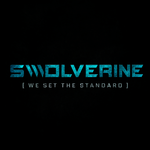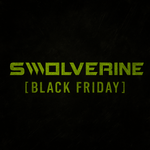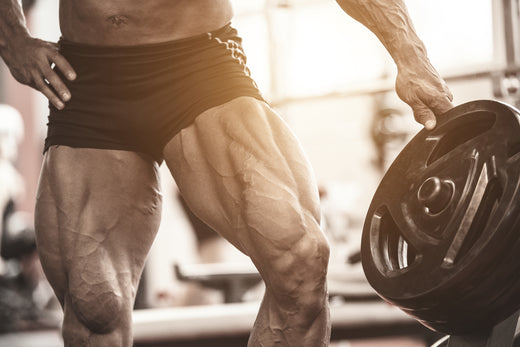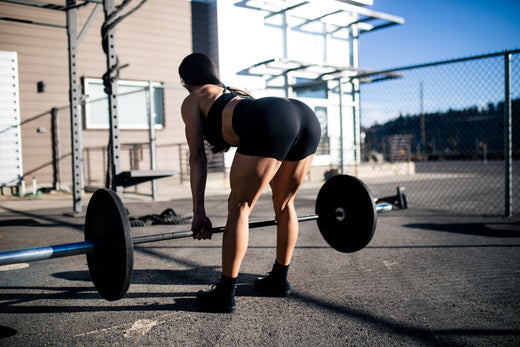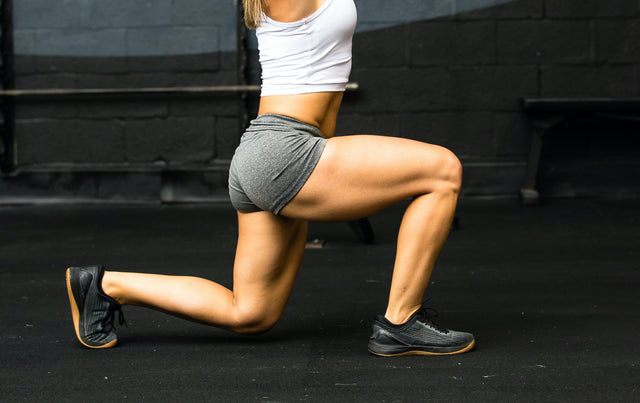Leg day can be and should be the most intense training day of your workout split. On leg day you’re doing more work because your legs are the body's biggest muscle group that provides the foundation for all your other muscle groups. And to grow them takes time, effort, and energy. We're going to talk about the best leg exercises for mass to hit on leg day to ensure you grow, grow, grow!
Leg Day Workout: Build Stronger Legs, Glutes, and Total-Body Power
The Muscles That Make Up Your Legs
Your legs are made up of several major muscle groups that work together to power movement, stabilize the body, and build strength:
-
Quadriceps: Located in the front of the thigh, responsible for knee extension.
-
Hamstrings: Located at the back of the thigh, responsible for knee flexion and hip extension.
-
Gluteus Maximus: The largest muscle in the body, critical for hip extension, posture, and explosive movement.
Understanding how these muscles work together is the first step toward designing a balanced and effective leg day routine.
Training Frequency: How Often Should You Train Legs?
If you're following a conventional training split—like Push/Pull/Legs (PPL) or a bro split (chest/tris, back/bis, shoulders/legs)—you’ll likely hit legs twice per week if you're consistent and lifting six days per week with one rest day.
But if your goal is to grow your glutes and legs, especially the booty, twice a week isn't enough.
🔥 For serious gains, aim for three leg-focused sessions per week, with progressive overload, heavy volume, and dedicated accessory lifts.
You might even benefit from splitting leg day based on muscle groups:
-
Monday – Quads + Glutes
-
Thursday – Hamstrings + Glutes
-
Saturday – Glute-focused Accessory Work + Plyometrics
This ensures balanced development, allows for adequate recovery, and promotes muscle hypertrophy across all leg muscles (Schoenfeld et al., 2016, Sports Medicine).
Why Training Legs Builds More Than Just Legs
Training legs does more than just add size to your thighs and glutes—it’s a catalyst for total-body strength and metabolic improvement:
-
Increases resting metabolic rate through greater muscle mass
-
Boosts anabolic hormone levels like testosterone and growth hormone
-
Enhances core strength and movement efficiency
-
Improves accessory lifts like deadlifts, power cleans, and kettlebell swings
🧠 Fun Fact: Compound leg exercises like squats and lunges have been shown to elicit higher testosterone and growth hormone responses than upper-body lifts (Kraemer & Ratamess, 2005, Medicine & Science in Sports & Exercise).
Don’t Forget Accessory Work
To maximize your glute and leg development, you need to go beyond the basics. Compound lifts like squats and deadlifts are essential, but accessory movements are where you'll target muscle imbalances, increase time under tension, and get the isolation work that enhances growth.
Here are some accessory exercises to add to your routine:
-
Hip thrusts (glute max focus)
-
Bulgarian split squats (quads, glutes, balance)
-
RDLs (Romanian deadlifts) (hamstrings and glutes)
-
Step-ups (multi-planar movement and stability)
-
Cable kickbacks (glute isolation and burnout)
Pro Tip: Support Recovery & Performance
To train legs hard multiple times a week, you need to support muscle recovery, strength, and sleep. Consider these two top-tier performance aids:
-
💊 Swolverine ZMT – Enhances recovery, sleep, and anabolic hormone support
-
💪 Swolverine Magnesium – Helps reduce cramping, improve muscle function, and aid in post-leg-day recovery
Leg Day Muscles Worked
QUADRICEPS (QUADS)

The quadriceps are a group of muscles on the front of the thigh. They consist of four distinct muscles: the rectus femoris, the vastus lateralis, the vastus intermedius, and the vastus medialis. They are responsible for extending the leg and helping with movements such as walking, stepping, and jumping.
HAMSTRINGS (HAMMIES)

The hamstrings are a group of muscles on the back of the thigh.
The semitendinosus, semimembranosus, and biceps femoris muscles comprise the hamstrings. Starting at the pelvis and running posteriorly along the length of the femur, the majority of muscles within the hamstring cross both the femoroacetabular and tibiofemoral joints. You use them to walk, climb stairs, do squats and perform many other leg movements.
GLUTEUS MAXIMUS (GLUTES)

Glute Activation 101: How to Fire Up Your Glutes for Maximum Growth
Why Your Glutes Matter
Your glutes are the largest and most powerful muscle group in your body, essential not only for aesthetics but also for athletic performance, posture, and injury prevention. Anatomically, the gluteal muscle group is made up of three major muscles:
-
Gluteus Maximus – The largest muscle in the posterior chain, responsible for hip extension, external rotation, and powerful movements like sprinting and jumping.
-
Gluteus Medius – Wraps around the side of your hips, stabilizing the pelvis during single-leg movement and essential for hip abduction.
-
Gluteus Minimus – The smallest of the three, located beneath the medius, assisting in pelvic stability and hip rotation (Distefano et al., 2009, Journal of Orthopaedic & Sports Physical Therapy).
Muscle Activation: The Secret to Growth
If you want to grow your glutes, activation is non-negotiable. You can squat and deadlift all day, but if you’re not consciously engaging your glutes, you won’t see hypertrophy or strength gains.
🔗 RELATED ARTICLE: How To Grow A Bigger Butt In 30 Days
What Is Glute Activation?
Glute activation refers to pre-activating or “firing up” the glute muscles before and during training. This process helps improve the mind-muscle connection, ensuring your glutes are engaged and doing the work—not your quads or lower back.
Research shows that exercises such as glute bridges, banded hip abductions, and clamshells effectively increase activation of the gluteus maximus and medius before training (Boren et al., 2011, International Journal of Sports Physical Therapy).
The Problem: Compensation and Poor Movement Patterns
When glutes aren’t firing properly, your body compensates using other muscle groups, especially during compound lifts like squats and deadlifts. This can lead to:
-
Lower back strain
-
Tight hip flexors
-
Overactive quads and hamstrings
-
Pelvic instability
Over time, this imbalance can cause chronic pain and make you “quad-dominant”—developing large quads with underdeveloped glutes. If you're chasing that round, strong glute aesthetic, that’s the last thing you want.
How to Tell If Your Glutes Aren’t Activating
-
You don’t feel a pump in your glutes after training
-
You feel most tension in your quads, hamstrings, or back
-
You struggle with hip hinge movements like RDLs or hip thrusts
-
You have poor posture or lower back discomfort
Fix It: Glute Activation Techniques That Work
Here’s how to prime your glutes before and during training:
-
Banded Glute Bridges
-
Monster Walks
-
Frog Pumps
-
Cable Kickbacks
-
Hip Thrust Iso Holds
Integrate 5–10 minutes of activation drills before your heavy lifts. Consistency here translates to better recruitment, stronger glutes, and more growth over time.
🟢 Want to optimize your recovery and support muscle growth? Try Swolverine ZMT for improved sleep, testosterone support, and muscular recovery, or Swolverine Magnesium to reduce muscle cramps and promote recovery.
9 Best Leg Day Exercises For Stronger Built Legs
1. Squats
First and foremost, one of the best leg exercises for mass we’re going to drop into the squat. Leg Day is not truly a leg day without squats. There are multiple variations of this exercise, and each one has its own individual nuances, which make them effective. No matter the variation, squats will focus on your quadriceps, glutes, and hamstrings.
You can utilize the traditional barbell back squat, dumbbell squats, box squats, pistol squats, landmine squats, front squats, sumo squats, hack squats, Jefferson squats, or Zercher squats. It really just depends on what you’re most comfortable with, and how it complements your range of motion. Switching things up every few weeks is also good to initiate more muscle hypertrophy.
The back squat is a compound functional movement, that recruits multiple muscle groups, joints, and stabilizing muscles. Back squat focuses and builds lower body strength and core stability, which is the foundation of several compound movements in functional training modalities.
The squat is a bilateral movement that helps build full-body strength. Squats, and back squats in general, demand a strong posterior chain, hamstrings, quads, and a substantial amount of midline stability as well as ankle mobility.
How To Squat
- Stance will vary from person to person, however feet should be between hips and shoulder width apart with your toes slightly pointed outward
- spine neutral chest open and shoulders back, make sure your heels are firmly planted into the ground as your weight will shift into your heels through the movement progression
- send your hips back on the descent like you're trying to sit in an invisible chair
- bend your knees with your chest open and lifted until parallel with the ground.
- press through your heels and push straight back up to standing position
2. Deadlifts
Deadlifts, another major compound movement, have many known full-body benefits and are extremely crucial in the development of total-body strength, proper hip function, core strength, and spine stabilization (which can reduce the risk of lower back injuries). Deadlifts recruit multiple muscle groups, joints, and stabilizing muscles, specifically targeting the hamstrings.
Deadlifts can add a ton of performance and health benefits to your leg day workout and should always be included at least once per week in your training program.
How To Deadlift
- Stand with feet hip- to shoulder-width apart. Rest your shins against the bar.
- Hinge at the hips and sink back into your glutes while keeping your spine extended and chest lifted up toward the ceiling.
- Grip the bar with one hand facing palm-up and the other hand facing palm-down. This over-under grip is for safety and can keep the bar from rolling out of your hands.
- Squeeze the bar with your hands as you sink back into your hips. As you sink into your hips, think about pulling your back and down to engage the lats. This will help keep your low-back stable.
- For the pull:
- Push your feet into the floor to straighten your legs and lift your chest as you lift the weight off the floor. As you stand up, think about pulling back on your knees and pushing your hips forward.
- Finally, for the lockout:
- At the top of the movement, hold your shoulders back as you keep your spine straight and tall. Pause for a moment before descending into the lowering phase.
- Slowly push your hips back while keeping your spine long and chest lifted into the air.
- Use your thigh muscles to resist the downward pull of gravity as the weight lowers back to the floor.
- At the bottom, pause, reset your hips and repeat for the desired number of repetitions.
- Push your feet into the floor to straighten your legs and lift your chest as you lift the weight off the floor. As you stand up, think about pulling back on your knees and pushing your hips forward.
- At the top of the movement, hold your shoulders back as you keep your spine straight and tall. Pause for a moment before descending into the lowering phase.
- Slowly push your hips back while keeping your spine long and chest lifted into the air.
- Use your thigh muscles to resist the downward pull of gravity as the weight lowers back to the floor.
- At the bottom, pause, reset your hips and repeat for the desired number of repetitions.
3. Bulgarian Split Squats
The Bulgarian-split squat is a single-leg squat variation, similar to a squat and lunge combined, that is one of the best leg exercises for mass. Compared to a traditional barbell squat, it removes all the pressure and load from your lower back and places it directly into your legs. The stabilizing leg of the Bulgarian split squat is elevated behind you, which allows a greater range of motion and depth, to achieve greater muscle hypertrophy, and strength gains in your glutes and quadriceps. Bulgarian split squats are key for building bigger quads and glutes, as well as functional midline stability. With a wider range of motion, you’ll also focus on your hip flexors. The split squat is a must-have leg day workout exercise.
How To Bulgarian Split Squat
- Start with your feet hip-width apart. with the right foot forward and the left foot placed back behind the body on a bench or box that is about knee-height, or just below knee height.
- Keeping your shoulders stacked directly above your forward-facing hips, begin to descend into a lunging position. Hold a dumbbell or kettlebell in both hands in a vertical position hanging on each side of your body.
- Keep your back straight while lowering your left knee towards the floor
- Go as low as you can while still ensuring your chest is staying open and the front knee is not protruding out in front of your toes.
- When your left knee lowers, press your right foot into the ground, pull back on the right knee, and push the top of the left foot into the box to return to standing.
4. Hack Squats
The hack squat is a compound strength movement and squat variation. However, the hack squat is a machine-based exercise instead of using free weights. The hack squat is an excellent auxiliary movement that can assist in developing better squat form and improve strength gains. A hack squat machine works just like a traditional barbell back squat, yet with a few variations. The hack squat is positioned at a 45-degree angle, which provides for a more controlled movement, placing less physical demand on your joints, and providing a deeper range of motion. Range of motion is a key contributor to muscle growth; therefore, the hack squat can benefit you by achieving more strength and gaining more lean muscle mass in a controlled and fixed motion.
How To Hack Squat
- Load the machine with your desired weight
- Step onto the platform and place your feet shoulder-width apart with toes slightly pointed out
- Place your shoulders firmly under the pads, retract your scapulae and grip the bars.
- Keep your back on the pad and head up at all times
- Inhale, brace your core, and disengage the safety bars on the machine
- Keep your legs straight without locking your knees
- Descend keeping your form and movement smooth just below parallel, slightly less than a 90 degree angle.
- Begin to raise and push the machine back up through your heels and exhale.
- Fully extend your knees and hips
- Repeat for the desired number of reps
5. Dumbbell Sumo Squat
The Sumo squat is a functional strength training movement and a variation of the traditional squat. Sumo squat differs from the front squat or back squat in positioning, muscles worked, and load. The key difference in the sumo squat, is that you take a wider stance, with your feet turned out. While the sumo squat still works the quads, hamstrings, glutes, and calves, the positioning stimulates the inner thighs as well.
One of the best ways to perform them is by using a single dumbbell with a wide stance. This variation is so great because you can emphasize your range of motion, one of the critical factors in building more gains.
How To Sumo Squat
- The conventional way to perform a sumo squat is with a single dumbbell, or kettlebell.
- Stand with your feet slightly wider than shoulder width with your feet pointed at a 45 degree angle.
- Holding a dumbbell from the top on one end, push your hips back and squat down slowly, keeping your upper back straight and chest open and up.
- Pushing through your heels, engage your core and come down until the dumbbell slightly touches the ground, or until your legs are parallel to the floor.
- Pause, then push back through your heels, chest up and core braced.
- Repeat for as many reps as needed.
6. Lunges
Lunges are fundamental to your leg day workout and among the best leg exercises for mass because they can add more size and strength to your legs. With an emphasized range of motion lunges effectively stimulate your quads, hamstrings, and glutes, to help build more lean muscle mass. If you want to build a bigger butt, lunges are one of the best exercises to help you get there.
Lunges can emphasize a deeper and pronounced range of motion, which is a fundamental piece in contracting your quads and focusing on your balance, coordination, and core stability.
The great thing about lunges is that there are many effective and efficient variations, you can utilize on your leg day workout. You can use multiple implements such as a dumbbell, plate, barbell, EZ bar, or kettlebells, and change up the frequency and times. You can overhead lunge, single overhead lunge, and the list goes on. Standard walking lunges through, or reverse lunges will get the job done for leg day.
How To Lunge
- Bend the knees and lower your body until the back knee is a few inches from the floor. At the bottom of the movement, the front thigh is parallel to the ground, the back knee points toward the floor, and your weight is evenly distributed between both legs.
- Push back up to the starting position, keeping your weight on the heel of the front foot.
- Take a step forward, keeping that thigh parallel with the ground, lower the opposing leg, until your back knee is near the floor, and push back up to starting position.
- Alternate legs and keep walking.
7. Glute Bridge/Hip Thrust
Whether you associate big strong glutes with attractive aesthetics in a pair of jeans or if you see the association between a big butt and athleticism, just about everyone can benefit from the glute bridge exercise. A glute bridge is just what it sounds like, a bridge (with your body) using the power from your glutes. While there are a lot of glute bridge variations, the most straightforward and easiest to perform is by laying on the floor or with a glute bridge machine. With the feet at a 90-degree angle, you simply drive your hips to the ceiling, and right back down.
How To Glute Bridge
- Start by laying flat on your back on the ground
- Making sure that there is no gap between your back and the floor, press your core into the ground, feeling the hips get in line with the spine (no arching)
- From here, begin to walk the feet towards the booty, until you reach a 90 degree angle
- Pressing your feet firm into the ground, with your arms flat out to the side, and your chin tucked so that your spine is straight, all you have to do is extend your hips towards the ceiling
- You’ll want to still not arch your back, keeping good posture, and squeezing the booty to power the hip drive
- Once you pause for a second at the top, gently come down with the same form, not arching, pressing the feet and the arms into the ground
- Repeat for as many reps as desired and add a weight, or a band, or another piece of equipment to make the movement more challenging
8. Romanian Deadlifts (RDL)
The Romanian deadlift is slightly different than the traditional deadlift and one of the best leg day exercises, especially for building mass. Although both movements will increase strength and muscle hypertrophy in the posterior chain muscles, Romanian deadlifts emphasize and target the hamstrings, as opposed to the glutes [R]. Electromyography (EMG) studies show that conventional deadlifts target and recruit the gluteus and rectus femoris muscles more so than the RDL, due to the biomechanical differences in exercise technique as the conventional deadlift starts and finishes more in a sitting position than the RDL with significantly more knee and hip flexion.
The primary muscles involved in the RDL are the posterior chain muscles, including the erector spinae, trapezius, gluteus maximus, hamstrings, and adductors. The hips will also hinge much more than a traditional deadlift.
How To Romanian Deadlift
- Stand tall with your feet shoulder width apart. Grab a loaded barbell, stand it up pushing your hips back and hold it directly in front of your thighs, with your hands set slightly wider than your thighs.
- Start with knees slightly bent at 15 degrees and slowly lower the weight, keeping the barbell close to your legs as you descend, hinging at the hips and keeping your back straight. Keep your core engaged and tight as you keep your torso straight.
- Lower the weight until you feel a slight stretch in the hamstrings, normally just past the knees. Keep your torso upright, arms straight and shoulders rounded drawing your shoulder blades back towards your spine.
- Drive your hips forward, and use your hamstrings to push the weight back up to standing position and repeat.
9. Single-Leg Romanian Deadlift
One of my favorite exercises for leg day, single-leg Romanian deadlifts are one of the more challenging stability and unilateral exercises for people to complete. As it challenges your midline stability, it actively lights up your posterior chain, primarily the erector spine, and hamstrings, standing as a great warm-up or focus piece for movements demanding posterior chain activation. You can perform this movement with a barbell, dumbbell(s), or kettlebell(s).
How To Single Leg Romanian Deadlift
- Standing with feet together, arms fully extended holding the weight in front of the hips, tilt your upper body forward, and begin to send on the leg back to counter-balance the weight.
- Actively squeezing the glutes throughout this movement will engage the posterior chain. Begin this movement going to the knee and only go lower if pain, discomfort, or severe stiffness do not present themselves.
What To Eat On Leg Day
You have to eat, to grow. Of course, muscle growth cannot occur without resistance training. However, for your body to build and rebuild muscle tissue, it must be in a positive protein balance, which means you need to eat more protein, than your body is utilizing to rebuild muscle mass. Not eating enough protein will actually cause you to lose muscle mass, not gain it. Protein is also not the only macronutrient your body needs to replenish and rebuild. Your body requires fuel from high quality proteins, heathy fats, and complex carbohydrates to maximize muscle growth and gains.
Leg day requires a lot of energy, which means you need an energy packed pre-workout meal to help you dominate your training. Adding in carbohydrates like oats, rice, or Clean Carbs from Swolverine is ideal for the best performance.
Eating a great post-workout meal is also just as important to build, rebuild, and recover. Make sure your calories are higher on leg day to account for the energy requirements.
RELATED ARTICLE 16 Of The Best Muscle Building Foods To Get Big Thighs
Keep Up The Intensity
Intensity means more than just endurance, it means work output and effort. To have a successful leg day, you need to keep your heart rate up, be consistent with your reps, and sets with close to maximum energy output. If the loaded weight is easy to move, then stack on more plates. The weight needs to be challenging, unless your body will not force adaptation, and change.
Hydrate
The last piece to a successful leg day is adequate hydration. Drinking water and adding electrolytes, will help your body with protein turnover, and regulate your energy and weight. When you regularly drink water throughout the day, it’s been shown that your resting energy expenditure (calorie burning) can increase up to 30%! [R] In more technical terms, this is called water-induced thermogenesis and by increasing it, you can burn more calories at rest. In order to increase your water-induced thermogenesis and calorie-burning process, it’s generally recommended that you drink about 34 ounces of water per day (1 liter).
One study had a cohort of women drink 34 oz. per day, without any other lifestyle changes (except drinking more water) for 12 months which resulted in 4.4 lbs. of weight loss. [R] Drinking more water, will help you change the composition of your legs and body, resulting in thicker thighs.
More electrolytes will help muscle contraction and fulfill energy requirements, for better performance and recovery. Drink Swolverine's INTRA during your workout for the best results.
Leg Day Workout Example
| EXERCISE | SETS/REPS |
| Squats | 5 - 15,12,12,10,8 |
| Deadlifts |
|
| Lunges | 4 - 20 |
| Split Squat | 4 - 15,12,10,10 |
| Romanian (RDL) |
4 15,12,10,10 |
Need Help With Optimizing Your Nutrition and Training Plan To Finally Get The Results You've Been Waiting For?
SWOLVERINE IS AN ENDURANCE ATHLETE AND ACTIVE LIFESTYLE BRAND. MADE FOR THE ELITE ATHLETE, AND THE STRONG-WILLED OUR PRODUCTS WERE DESIGNED TO FUEL YOUR ATHLETIC PERFORMANCE. WE PERFORM WHEN YOU PERFORM.
We believe that everyone can optimize not only their athletic performance but their human potential. The way we believe we can optimize performance is through transparency, clinically effective doses, and clinically proven ingredients with evidence-based outcomes. We provide the nutrients you need to power your active lifestyle.


